Two Black men, Edenborough Smith and John Harshberger appear in the 1850 census on tracts of land now situated in Laurel Ridge State Park overlooking Johnstown’s West End. From at least the 1820s, and possibly as early as the turn of the 19th century, Smith, Harshberger and their families lived in a community of Black, White, and Indigenous people that has been referred to as the Laurel Hill Settlement, Brown Farm and “the Mountain.” Eight generations lived on the Mountain until the property was claimed by the state in 1967.
Today, the settlement cemetery is the most visible landmark, but a closer look reveals roads, foundations, groves of trees, and other evidence of 15 decades of life. The Laurel Hill Settlement has a lot to tell us about how this unique community adapted to life on the Pennsylvania frontier, life on the mountain, and life in America during a period of significant economic and social change.
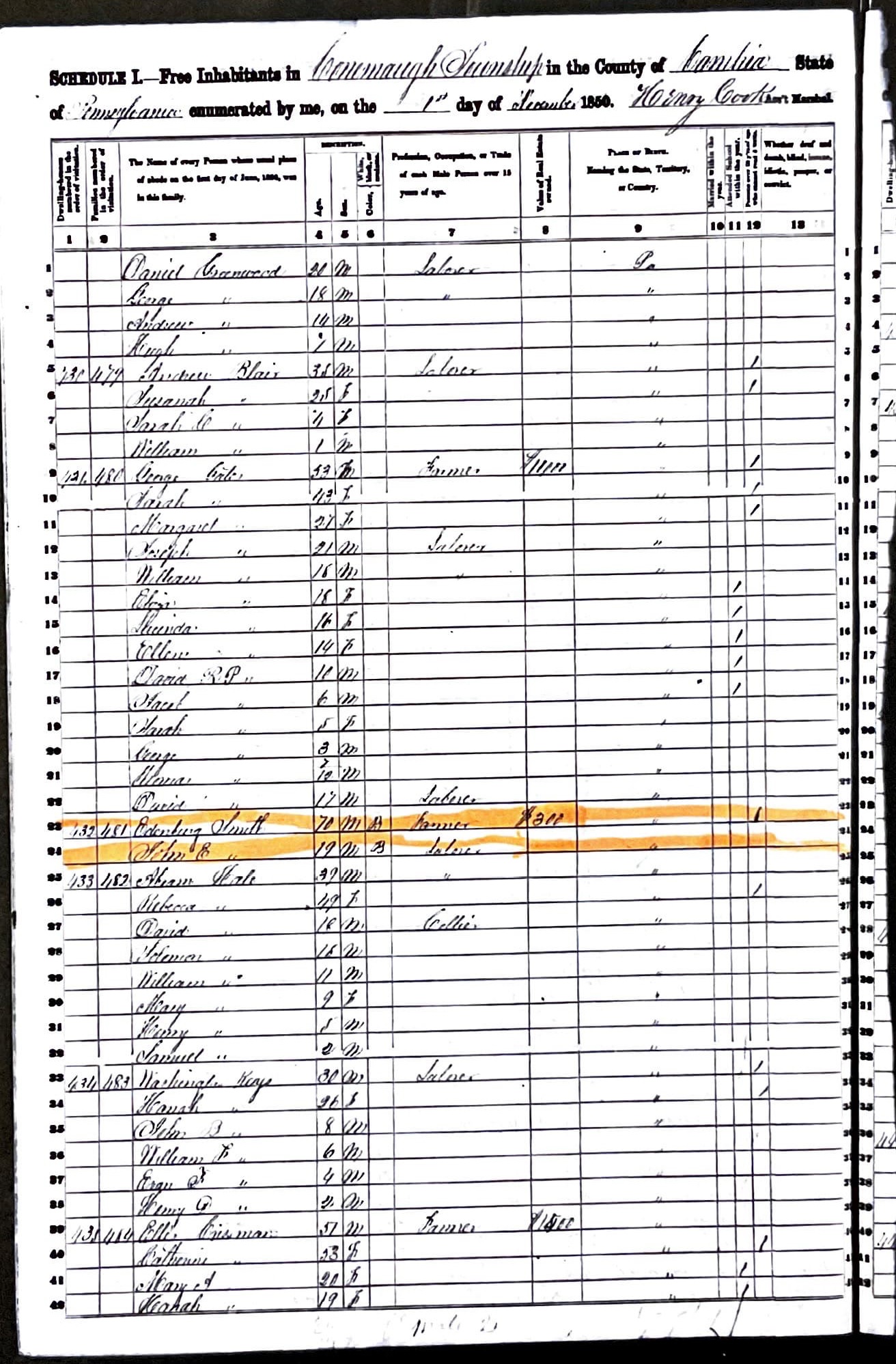
1850 census, Cambria County, Pennsylvania, population schedule, Conemaugh Township, dwelling 132, family 1181, Edenburg Smith. Image provided by IUP.
With support from the Richard King Mellon Foundation, the Pennsylvania Department of Conservation and Natural Resources (DCNR), Western Pennsylvania Conservancy (WPC), Indiana University of Pennsylvania (IUP), and local historians partnered to explore the Laurel Hill Settlement as part of the larger Untold Stories of Pennsylvania’s State Parks and Forests project. Through a partnership led by the Western Pennsylvania Conservancy, this project is an effort to discover, interpret and share the untold stories of underrepresented and marginalized groups associated with lands currently operating as state parks and forests in Western Pennsylvania.
The work included collating and annotating an extensive collection of sources from local historian, Elaine Adams, who graciously allowed the IUP team to digitize her extensive research collection on the Brown Farm, as well as original research through Ancestry.com and site visits to better understand the landscape.
This research resulted in three narratives focusing on the landscape, women, and the historical context surrounding the Laurel Hill Settlement. The goal of these narratives is to provide DCNR a tool to enhance community relations and tell the stories of previously overlooked communities that inhabited state park and forest lands. StoryMap versions of these projects are now available to the public.
Tensions between the Laurel Hill settlement descendants and the state emerged after the State claimed the land through eminent domain. The Laurel Hill project is aimed not only at highlighting the history of a unique multi-racial community living on the edge of Johnstown throughout much of the 19th and 20th centuries but also rebuilding community trust today. Untold Stories is about making sure all Pennsylvanians see their histories represented in historical site interpretations and feeling welcome in state parklands and forests today.
Though there are limited historical records about the Laurel Hill Settlement and its inhabitants, they reshaped the land in ways that indicated a commitment to permanent settlement:
- The cemetery is the most visible legacy of the community. Community guardians, including Lisa Cacicia, erected a fence to protect the graves, and IUP Applied Archaeology MA student Emma Lashley is conducting a ground-penetrating radar survey within and around the cemetery to better understand the number of burials.
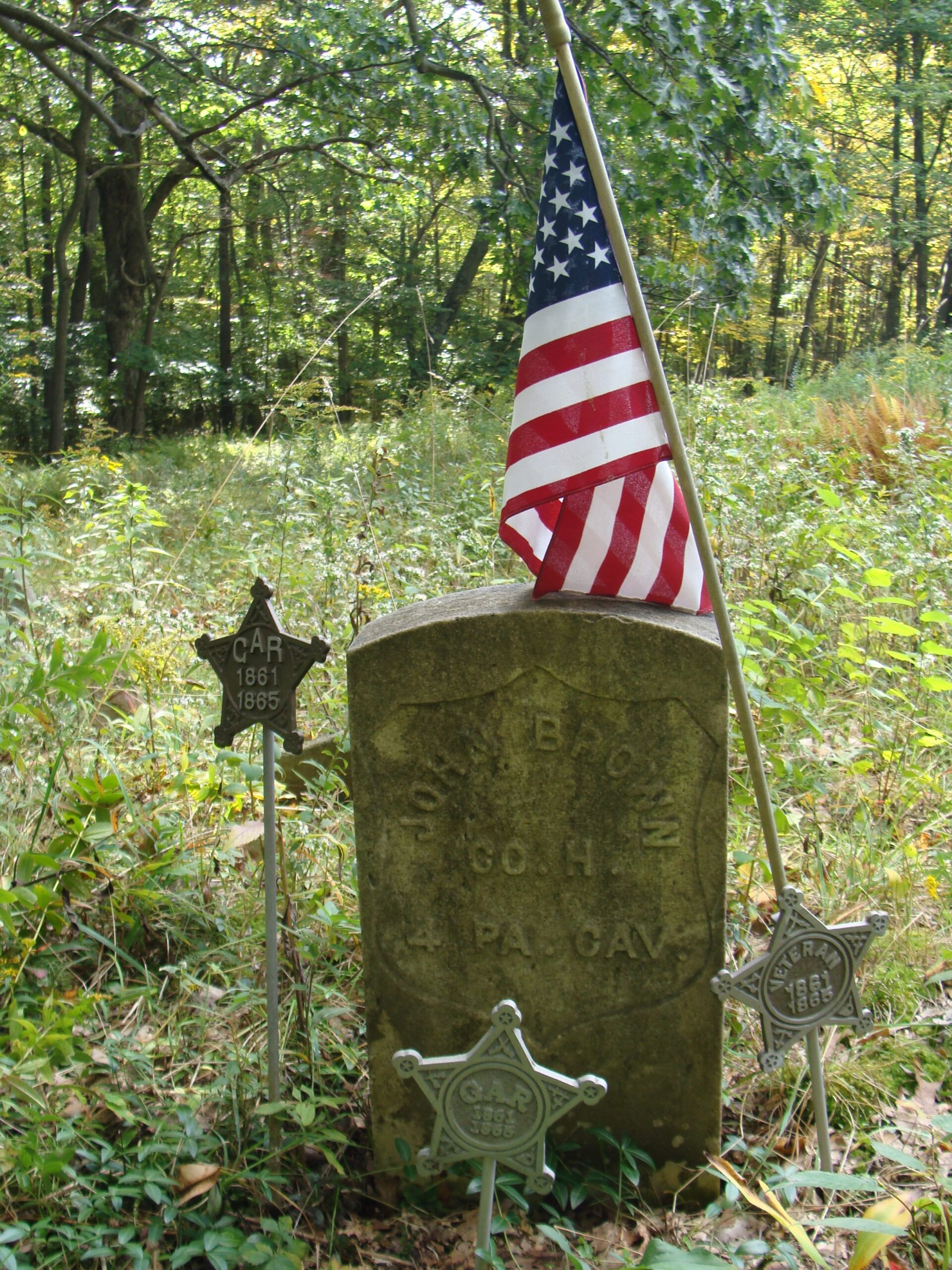
John Brown, Civil War Veteran, Grave Marker. Photo provided by IUP.
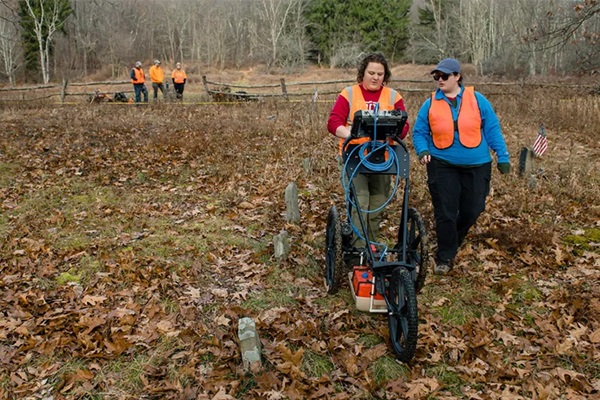
Emma Lashley conducting ground-penetrating radar survey. Photo provided by IUP.
- IUP graduate student Abdul Jones is beginning preliminary archaeological research to determine the locations of former buildings on the site – buildings that descendants and others talked about in their recollections of the site.
- Inhabitants also reshaped the landscape by planting apple trees, which are still bearing fruit. The trees are thought to have been planted in the late 19th or early 20th century. Arial maps showed how inhabitants cleared the land, and how the forest encroached as the number of inhabitants working the land declined over time.
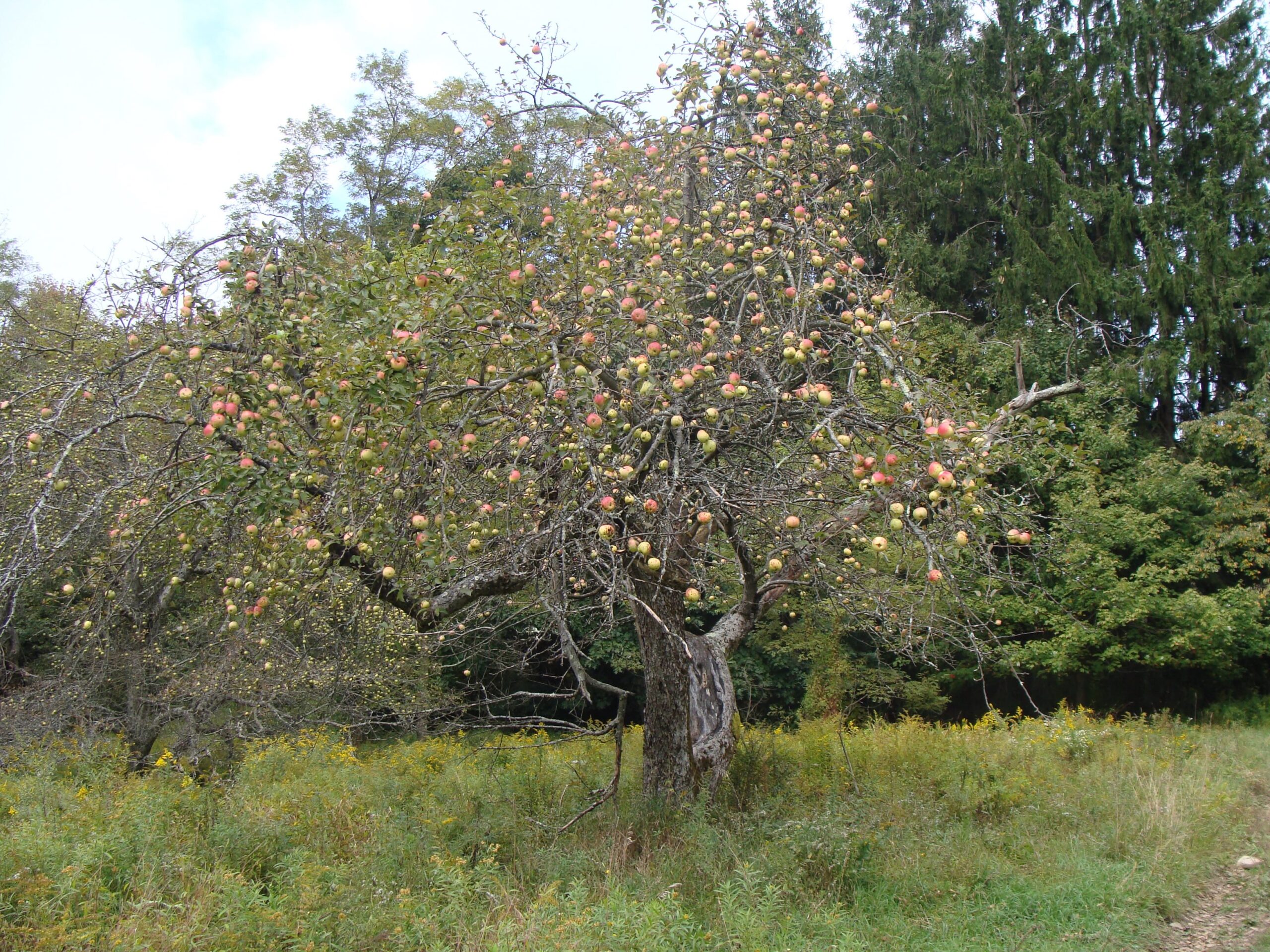
Apple Tree, Brown Farm. Photo provided by IUP.
Former residents and descendants have a deep connection to the Mountain. For generations they returned to the site for family reunions, something that continued even after the state claimed the land. As the forest encroached and roads became less used and accessibility declined, the site eventually became isolated and nearly forgotten by outsiders.
Today it feels remote because it is hard to access, but that was not always the case. In its heyday it sat along a stagecoach route going over the ridge, and the inhabitants engaged in trade with local communities on both sides of the mountain. Given its location, it’s also possible it played a role on the Underground Railroad, which has a well-documented history in Johnstown.
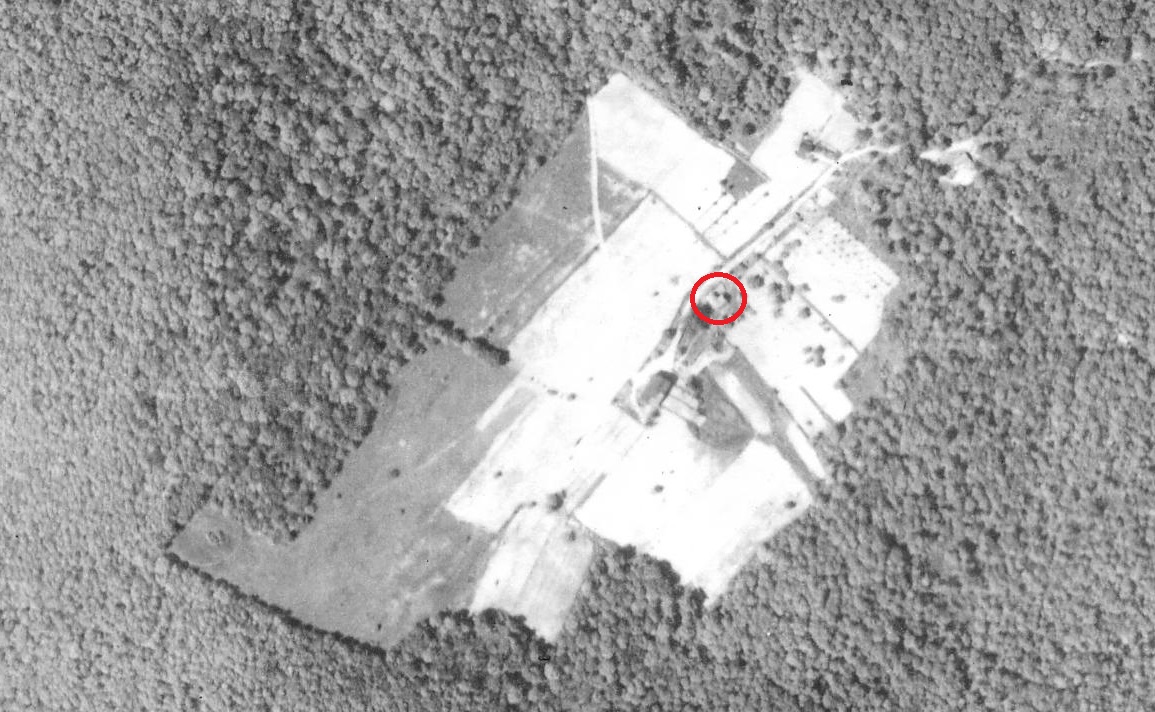
1939 Aerial with the original house circled.
Downloaded from Pennsylvania – Maps & Geospatial: Aerial Photographs (Historic) – Library Guides at Penn State University. Image provided by IUP.
Currently, DCNR is working on ways to make the site more accessible so that descendants and other visitors can learn about this special community and its place in history.
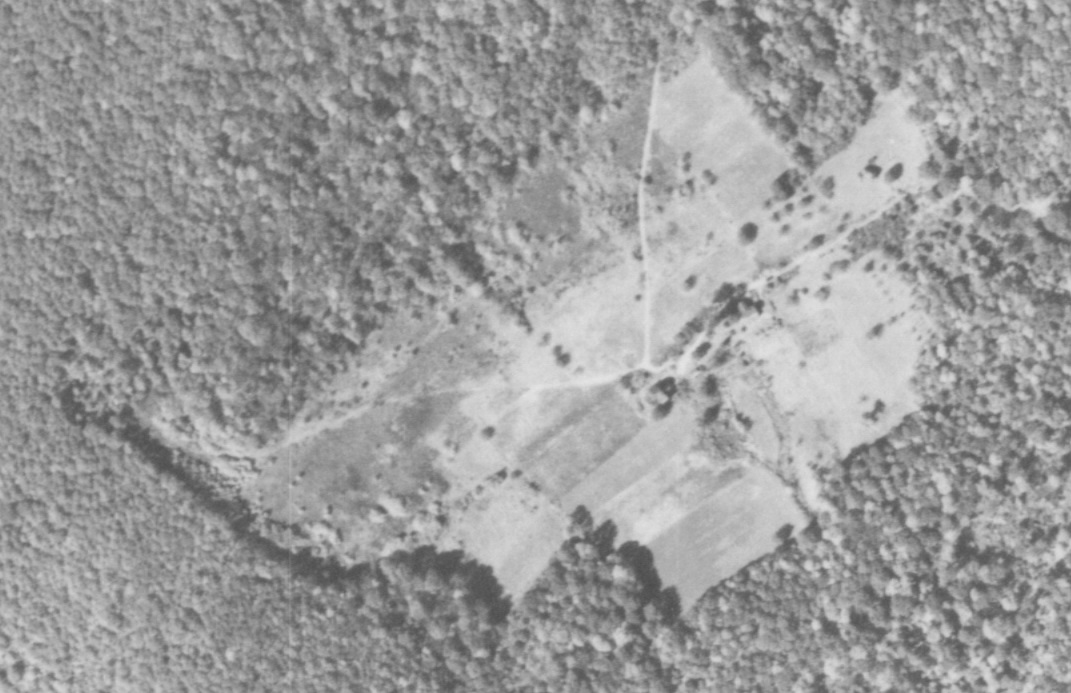
1951 Aerial. Downloaded from Pennsylvania – Maps & Geospatial: Aerial Photographs (Historic) – Library Guides at Penn State University. Image provided by IUP.
Indigenous people, African Americans, women of all backgrounds, and children are often largely absent from historical records. In the early census records, women and children are simply hashmarks in various columns—no names, precise ages, or work contributions are recorded. Reinterpreting history with this in mind allows us to think about people’s experiences differently.
Women played an important role in the Laurel Hill settlement, which is why we focused on their contributions, and the role of women generally in early settlements. We also applied bell hooks’ concept of “home place” to think about how Black women on the site created a home for the settlement residents in a racially hostile period (like the expulsion of Black and Mexican residents from Johnstown in the 1920s). Women like Elizabeth Harshberger worked as a washerwoman in Johnstown while also doing the backbreaking labor of living on a mountain, raising a family, and bolstering the community.
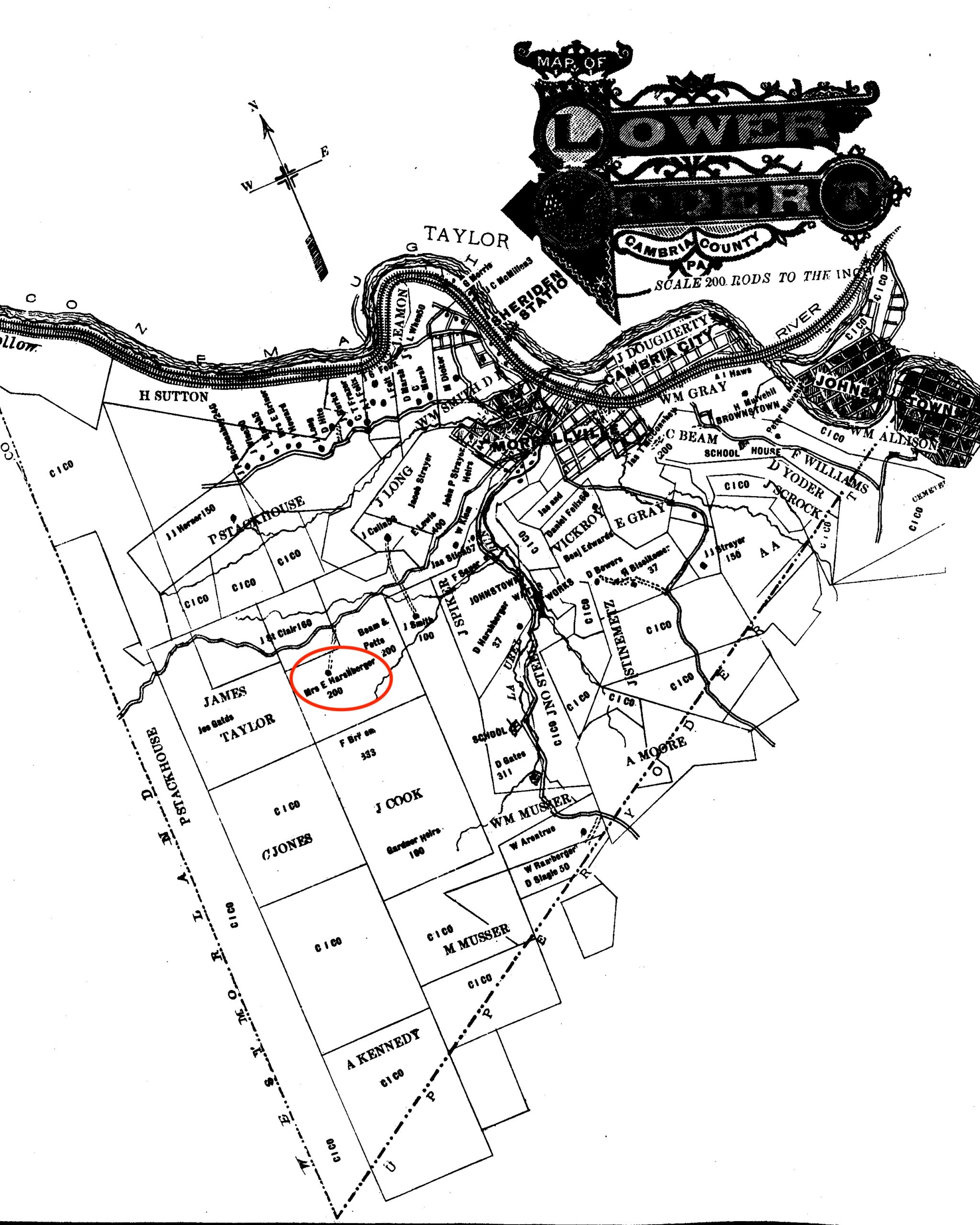
Elizabeth Harshberger homestead (circled), “Lower Yoder”, 1890, Atlas of Cambria County. Atlas Publishing Company. Image provided by IUP.
Descendents well into the modern era recognized life was difficult on the Mountain, but it also was a place of community and camaraderie. There are a few existing oral histories, hosted on Cambria Memory a website developed and maintained by Pennsylvania Highlands Community College through the exceptional work of Barb Zaborowski, but this is an area for further research and growth.
As noted, community relations soured after the state took over the land, so one goal of the Untold Stories project is to rebuild those connections and cultivate a relationship where the state works with family and community members to interpret these sites. The Untold Stories project provides opportunities to better understand Pennsylvania history and the various people who shaped it, and to share those stories with local communities across the Commonwealth. The project also provides university faculty and students with valuable opportunities to do hands-on research in their own backyards and to see the impact their work can have on local communities.
_______________
This week’s guest authors are Erin Conlin and Ben Ford. Erin is an Associate Professor of History at Indiana University of Pennsylvania. She specializes in 20th century US, digital, and oral history. Ben is a Professor of Anthropology at Indiana University of Pennsylvania specializing in historic and maritime archaeology. His research focuses on the Great Lakes and Pennsylvania.
Comment Policy
PHMC welcomes and encourages topic-related comments on this blog. PHMC reserves the right to remove comments that in PHMC’s discretion do not follow participation guidelines.
Commenters and Comments shall be related to the blog post topic and respectful of others who use this site.
Commenters and Comments shall not: use language that is offensive, inflammatory or provocative (this includes, but is not limited to, using profanity, obscene, or vulgar comments); disparage other commenters or people; condone illegal activity; identify the location of known or suspected archeological sites; post personal information in comments such as addresses, phone numbers, e-mail addresses or other contact details, which may relate to you or other individuals; impersonate or falsely claim to represent a person or an organization; make any commercial endorsement or promotion of any product, service or publication.
If you would like to comment on other topics not related to this blog post but related to PHMC, please fill out the PHMC Contact Us Form.
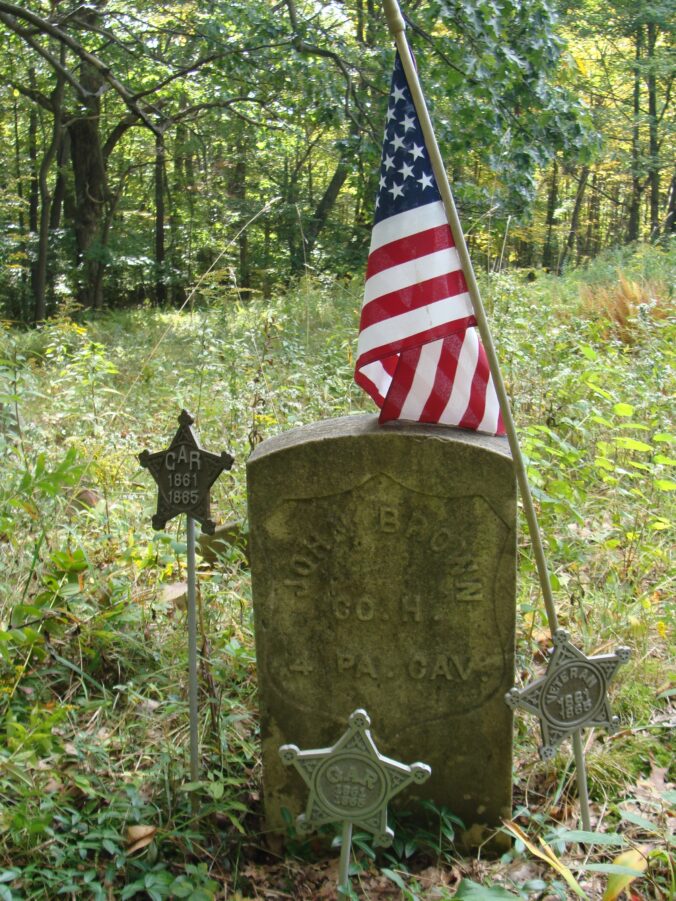
What a fascinating and up till now not well known story! So interesting– It makes me wonder what other hidden history we have yet to learn and explore.
What an excellent post! The story of Edenborough Smith, John Harshberger, the Laurel Hill Settlement, and the site is truly meaningful and inspiring—it teaches us so much about community, identity, and belonging. It beautifully highlights our shared human experience in a way folks can feel. Awesome work to all who contributed! I’m super excited to see what you’ll do next! Keep it up!
Why did the State take over this settlement ?
Beginning in 1966, the Western Pennsylvania Conservancy controlled thousands of acres along Laurel Ridge, ranging from the Youghiogheny River to the Conemaugh River. They purchased the land comprising Laurel Ridge State Park as part of the Project 70 park movement. The Laurel Highland Hiking Trail is a 70-mile trail through the area. https://www.pa.gov/agencies/dcnr/recreation/where-to-go/state-parks/find-a-park/laurel-ridge-state-park/history.html
In the mid-twentieth century, land acquisition via eminent domain was more common as states sought to obtain land for public lands and parks (and infrastructure development). The practice fell out of favor since it often resulted in negative feelings between community members and government agencies. In some instances, as may have been the case with this site, owners also owed back taxes and lacked the means to repay them.